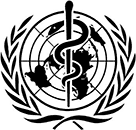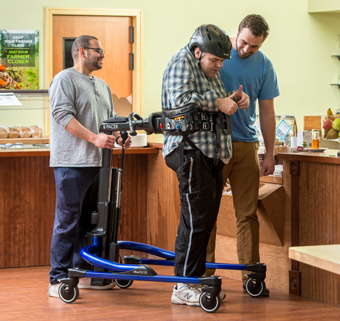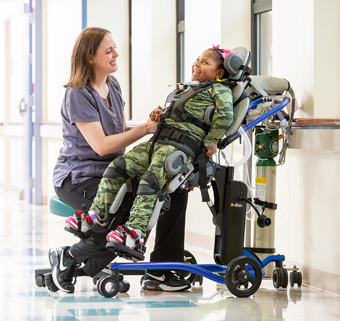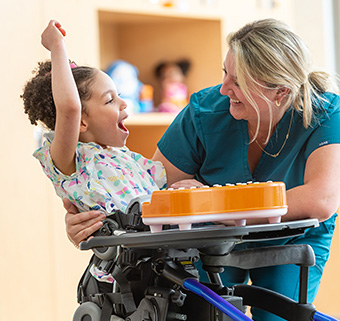Motor Learning Practice part III
| July 2012Today’s post concludes our discussion on Motor Learning and Practice. The introductory post defined motor learning terminology, discussed the MOVE Curriculum (as an example of applied motor learning) and emphasized the importance of practice. The second post looked at transfer-appropriate training and practice scheduling and leads into today’s evidence-based discussion on the difficulty of practice.
Difficulty of Practice for Motor Skills Learning & Control
 The findings regarding the superiority of random practice for learning indicate that effective practice needs to involve a certain depth of processing, or repeating and refining the problem-solving process itself. Bernstein describes this very well:
The findings regarding the superiority of random practice for learning indicate that effective practice needs to involve a certain depth of processing, or repeating and refining the problem-solving process itself. Bernstein describes this very well:
The process of practice towards the achievement of new motor habits essentially consists in the gradual success of a search for optimal motor solutions to the appropriate problems. Because of this, practice, when properly undertaken does not consist in repeating the means of solution of a motor problem time after time, but in the process of solving this problem again and again by techniques which we changed and perfected from repetition to repetition. (Bernstein, 1967, p. 134)
If we require the learner to repeat the problem-solving process rather than simply repeating a movement, practice will often be somewhat difficult and require effort. Of course, as a skill is learned it becomes easier and more automatic, and the attention requirements and effort decrease. The key points to remember are: it is not always beneficial to structure practice so that it is easy for the learner, and factors that improve short-term performance do not necessarily improve learning. Richard Schmidt, in discussing the benefits of random practice says:
Related to this point is the notion that practice, if it is to be effective, needs to be somewhat difficult and effortful: practice should not be so difficult that the learners simply cannot function, of course, but also not so easy that important information processing activities are avoided. (Schmidt, 1991, p. 54)
This concept that practice should be difficult, is also incorporated into the MOVE curriculum, which advocates practicing skills at the “just manageable difficulty” level when a child is beginning to learn a new motor skill. (Bidabe, 1999) This initial stage of learning requires effort and concentration, but that should not deter the student or therapist.
Context of Practice: Variability
Movements can be classified according to their context. Gentile’s classification of tasks examines the presence or absence of motion and intertrial variability in the environmental context of a movement. Tasks with no motion and no intertrial variability are called “closed” tasks, while those with motion and intertrial variability are called “open” tasks. (Gentile, 2000) Intuitively, it would make sense that practicing open tasks under variable conditions would be helpful for learning; however there is evidence that variability in practice is important for closed tasks as well (ie, practicing the target task and closely related tasks as well). (Schmidt & Lee, 1999) As would be expected, during practice of a task, performance is much better under constant conditions than under variable conditions. However, the skill is retained better following practice under variable conditions. Transfer to similar tasks is also enhanced by variable practice. Research with both adults and children has examined the effects of variability on skill acquisition, and the benefits of variable practice vs. constant practice seem even stronger in children than in adults. (Schmidt & Lee, 1999)
How might this affect motor skills training for our population? If our goal is to enhance learning and the ability of the child to generalize the skill, we should practice under varying conditions. One aspect of variability that is important for this population is to practice motor skills with different people. If a child works on certain motor tasks only with the occupational therapist, for example, he or she may become dependent on that person for performing those tasks. This is one benefit of the MOVE curriculum, where all members of the team help the child to practice the same skills.
Adaptive and Part-task Training
In the therapy setting, practice of motor tasks is often modified in one of two ways: either the task is adapted to make it easier, or the task is broken down into simpler “parts” which can be practiced separately. Carolee Winstein in her review of the motor learning principles (Winstein, 1991a) points out that the adaptive training is not well supported by the literature. Practicing less difficult variations of the task may encourage control strategies that are not appropriate for the transfer task. For example, when you walk very slowly, you must significantly change the way you shift weight compared to walking at your typical, preferred speed. Children with severe disabilities often are unable to practice a motor skill unless the task is modified or external support is given. We do need to be aware of the limitations of adaptive practice and try to make the control requirements of the adapted task as similar as possible to the task we are trying to teach.
Part-task practice also has limitations, although for complex tasks it is beneficial to practice parts which are natural subunits of the task. (Winstein, 1991a) It is necessary to carefully consider if the subtask is indeed a “part” of the whole task. For example it is very doubtful that “reciprocal lower extremity motion” as practiced on a tricycle is a natural subunit of ambulation.
These posts reviewed some important concepts of motor learning, many of which can be applied in clinical situations where students with severe disabilities are learning motor skills. The important distinction between immediate improvements in performance, and learning, which is a long-term change, was discussed. Variables related to practice (the amount of practice, practice scheduling, variability etc.) can all be manipulated to produce the greatest long-term benefit. In addition, augmented feedback, modeling, and physical guidance can all be used to enhance motor learning. The MOVE Curriculum offers an excellent practical framework for applying these motor learning concepts for our population.
Material for this three-part series is excerpted from the book Children with Severe Disabilities and the MOVE Curriculum: Foundations of a Task-Oriented Therapy Approach by Gilbert Thomson, PT, published in 2005. To obtain a copy of the book, contact MOVE International.
Motor Learning & Practice – Part I
Motor Learning & Practice – Part II
References
Bernstein, NA. The coordination and regulation of movements: New York: Pergamon; 1967:134.
Bidabe, DL. MOVE: Mobility Opportunities Via Education. Bakersfield, CA: Kern County Superintendent of Schools; 1999.
Gentile AM. Skill Acquisition: action, movement and neuromotor processes. In : Carr JH, Shepherd RB, eds.Movement Science: Foundations for Physical Therapy in Rehabilitation. 2nd ed. Rockfville, MD: Aspen Publishers; 2000:111-187.
Schmidt RA, Lee TD. Motor Control and Learning: A Behavioral Emphasis. 3rd ed. Champaign, IL: Human Kinetics; 1999.
Schmidt RA. Motor learning principles for physical therapy. In: Foundations for Physical Therapy.Contemporary Management of Motor Control Problems, Proceedings of the II STEP Conference. Alexandria; VA: Foundations for Physical Therapy; 1991:49-63.
Winstein CJ. Designing practice for motor learning: clinical implications. In: Foundation for Physical Therapy.Contemporary Management of Motor Control Problems, Proceedings of the II STEP Conference. Alexandria, VA: Foundation for Physical Therapy; 1991a:65-76.




